Posts published in 2019
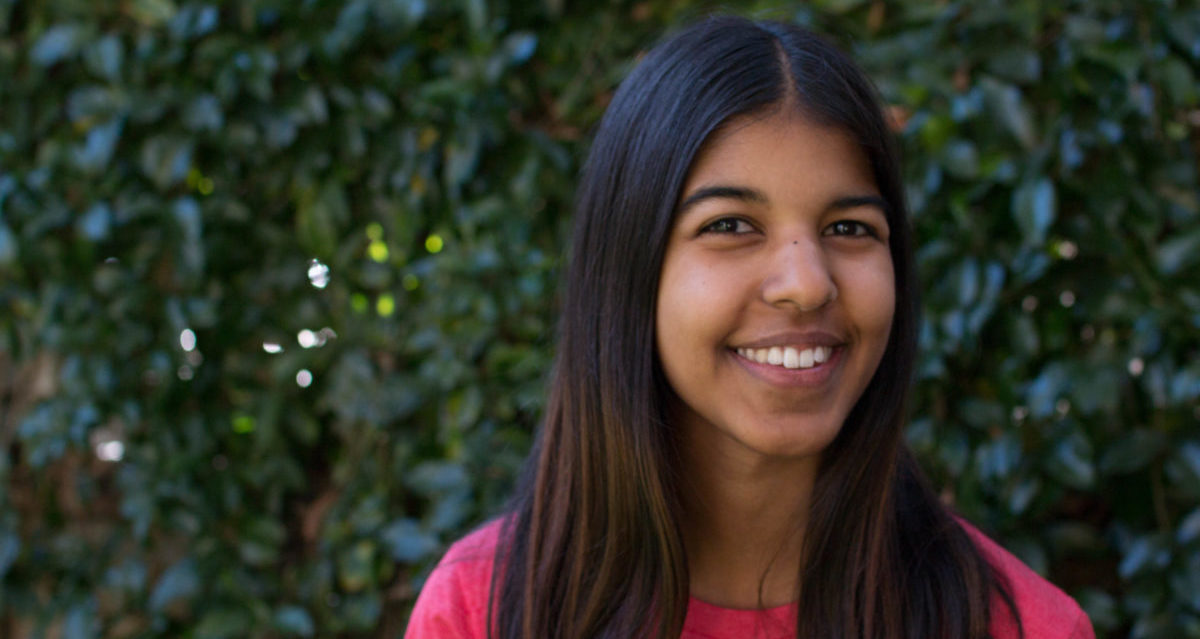
Hidden in Plain Sight: Deconstructing the Mental Health Stigma
By Anika Sinha, ’21
Content Warning: This post contains information related to self harm and mental illness that can be difficult to review. Please make use of campus resources such as Vaden Health Center’s Counseling & Psychological Services and The Bridge Peer Counseling Center to support your safety and well-being.
“I cut myself pretty often. I want to stop but I can’t. How do you stop?” My teaching partner and I stared at this card for longer than usual, then glanced at each other, unsure of how to proceed.
I am a classroom teacher for Health Education for Life, Partnerships for Kids (HELP4Kids). Every Friday, I teach health education to sixth graders at a local middle school. Topics include mental health and wellness, exercise, nutrition, drugs and alcohol, and sleep. Most of my days in the classroom are full of giggles and interrogations about the college experience. Questions can range from: “What classes are you taking?” to “How often do people get drunk?” HELP4Kids lets me escape the Stanford bubble for a brief hour and immerse myself in the colorful world of a middle school classroom. Regardless of my mood on campus, I trust the kids to bring a smile to my face… but this is not always the reality.
At the end of every class, we hand out notecards to the students, so they can ask anonymously any questions they may be uncomfortable to ask in front of the class. The topics we discuss can be quite sensitive and personal, so we want to give space for deeper discussions. Some of the notecards are random sketches pulled out of wild 11-year-old imaginations, some are simple “thank you’s,” and some even contain memes. However, the majority include thoughtful comments or questions about the day’s lesson.
The day we taught a lesson about mental health, I knew we would receive some sensitive questions. But I was still stunned and unprepared to find out that one of my students was struggling so deeply. This indicated my own naiveté. How could someone so young be afflicted to the point of hurting themselves? I thought. After reflecting for a while, I realized that this very mindset was part of the problem. Instead of marveling at how problems like this could even exist, I needed to consider the underlying systemic issues perpetuating my surprise. This child had obviously been hiding this issue. Without the notecards we passed out, they would not have had a platform to speak up. Their reluctance to ask for help ultimately boils down to the stigma attached to mental health issues, a problem that ravages our society.
After reading the notecard, my co-teacher and I reached out to the classroom teacher and school nurse immediately to address the situation. They informed us that they knew the student who wrote the note, and would follow up imminently to ensure they received proper care.
Experiences like this one have shown me that reducing stigma around mental illness is of paramount importance, especially when it comes to adolescents. More notecards from the students in HELP4Kids revealed similar themes, and those were just from the ones who were brave enough to speak up.
I know I am just barely scratching the surface of this issue, but I am doing what I can to reduce this stigma on campus. As a residential assistant and co-president of Stanford Mental Health Outreach, I have been committed to normalizing conversations about mental illness through speaker panels, mental health short films, and fostering vulnerability with my residents. The more these conversations occur, the more students will be able to admit to themselves and to others that they are struggling. This is the first step toward healthily managing life with a mental illness.
My experiences are teaching me that mental illness is relentless: nobody—no matter their age, gender, career, income, education—is given a free pass. If someone seems too young or too accomplished to be battling with it internally, I need to think again. To combat stigma, we need to foster platforms where people can speak openly about their struggles, without fear of judgement… and, most importantly, with the promise of support.

Anika Sinha, ’21, is majoring in human biology with a minor in psychology. In addition to working with youth through HELP4Kids and Peer Health Exchange, Anika is involved in Student Clinical Opportunities for Premedical Experience (SCOPE) and Stanford Mental Health Outreach (SMHO). You can find Anika at Branner Hall as a resident assistant, or at the Haas Center for Public Service, where she serves as a Cardinal Service Peer Advisor.
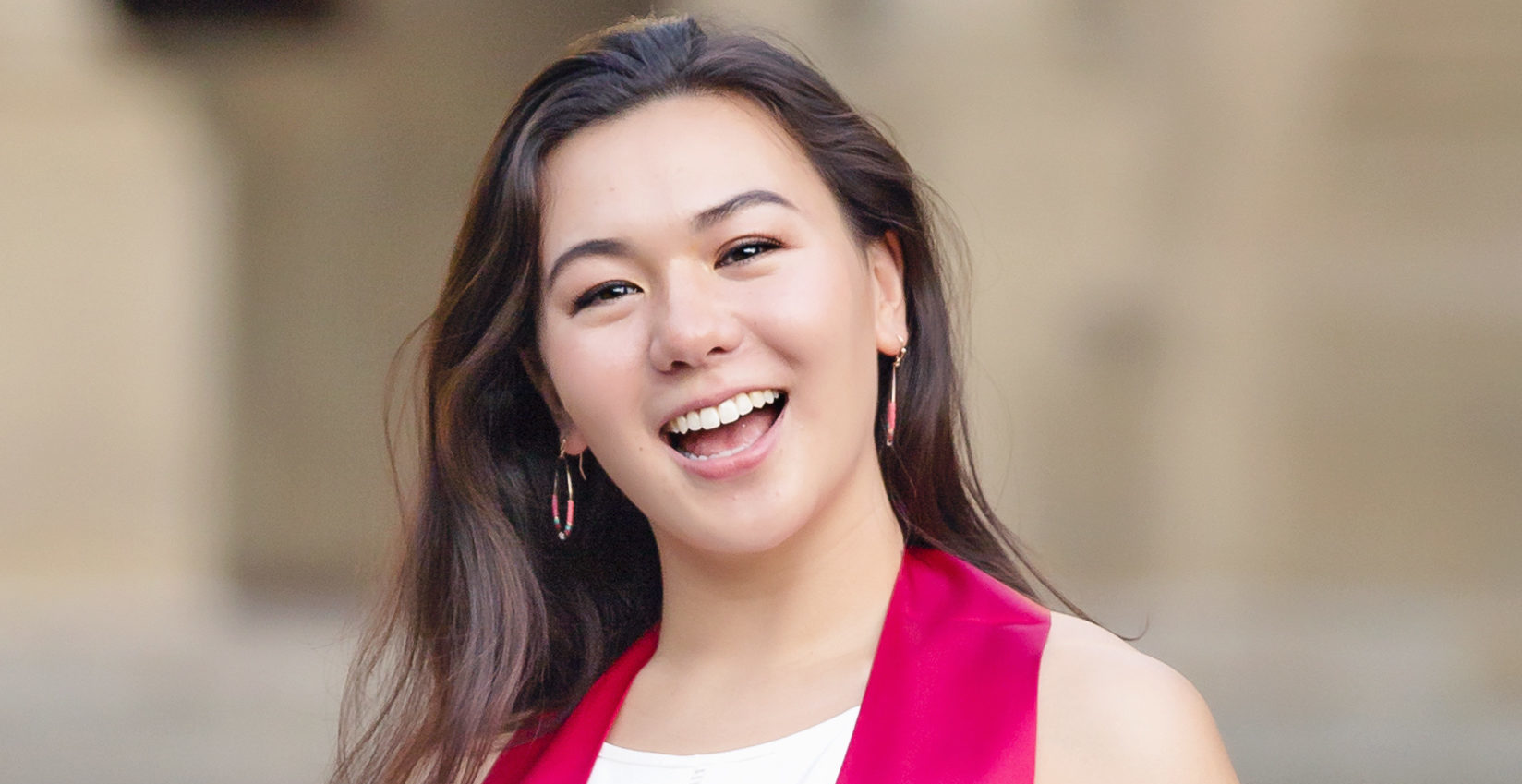
How an Urban Studies Class Made Me a Better Engineer
By Katherine Erdman, BS ’19, MS ’20
As the countdown to graduation began, I, like many other Stanford seniors, was eager to complete my general education Ways of Thinking/Ways of Doing. As I planned my fall quarter, I was on the hunt for a class that satisfied my last unfulfilled requirement: Engaging Diversity. There were almost 200 classes to choose from, but I settled on Urban Studies 164: Sustainable Cities. I had a mild interest in environmental technology, so I decided to give it a go.
On the first day of class, I was surprised that the focus of the course wasn’t on hydrogen fuel cells and electric cars. Rather, environmental health was just one of four aspects of sustainability we would be tackling, in addition to cultural continuity, social equity, and economic vitality. This broadened definition of sustainability, going beyond greenhouse gases and air quality indexes, was especially meaningful on the day we talked about transportation in the Bay Area. Like many other computer science students, I spent a summer interning at a large technology firm just miles from campus. I did not have a car and benefited from the shuttle service provided as part of the job. Every morning, I walked a few minutes to the nearest stop, hopped on the bus, and arrived to work without issue. I brought this up as an avenue to increase sustainability. The buses were quite full and eliminated at least hundreds, if not thousands, of mostly single-occupancy cars from the road. While my classmates agreed that the shuttles helped with environmental health, I was challenged to also consider the soaring housing prices near newly placed shuttle stops that make longtime residents unable to afford to stay. They are often replaced by tech workers, eager to be closer to the shuttle stop and able to afford higher rent. Perhaps certain shuttle stops trade off cultural continuity in pursuit of sustainability?
Through many eye-opening discussions, I more clearly saw the effects of sustainability efforts within the social and cultural realms by the end of the quarter. I walked away with a new perspective, which I applied to my senior project class CS210: Software Project Experience with Corporate Partners. My CS210 team partnered with Oracle and was given the task of creating social good technology. We decided to tackle the issue of employment opportunities for formerly incarcerated individuals. Within this space, it’s easy to identify unmet needs, such as the need for technological education for someone who has been disconnected from the job market for a number of years or the need for mock interviews for someone who has never formally applied for a job before. However, my experience in Urban Studies 164 helped me understand how any solution has to fit within a larger ecosystem. I found that my team and I were challenged to look beyond economic vitality and consider the cultural continuity and social equity concerns that our solution had to address. Whether integrating our solution into the parole preparation process for the incarcerated in Australia or modifying the product’s user interface to be approachable for first-time digital users, our team attempted to address cultural and social issues that appear tangential, but are deeply connected to the product’s success.

Katherine Erdman, BS ’19, is a coterminal master’s student in computer science from Ellicott City, Maryland. During her senior year, she took Urban Studies 164: Sustainable Cities, a Cardinal Course that introduces students to sustainability concepts and urban planning as a tool for determining sustainable outcomes in the Bay Area. Katherine has been involved in the Business Association of Stanford Entrepreneurial Students, SHIFT: Healthcare Innovation @ Stanford, and she++. She is also a member of the Student Alumni Council and the Viennese Ball Steering Committee.
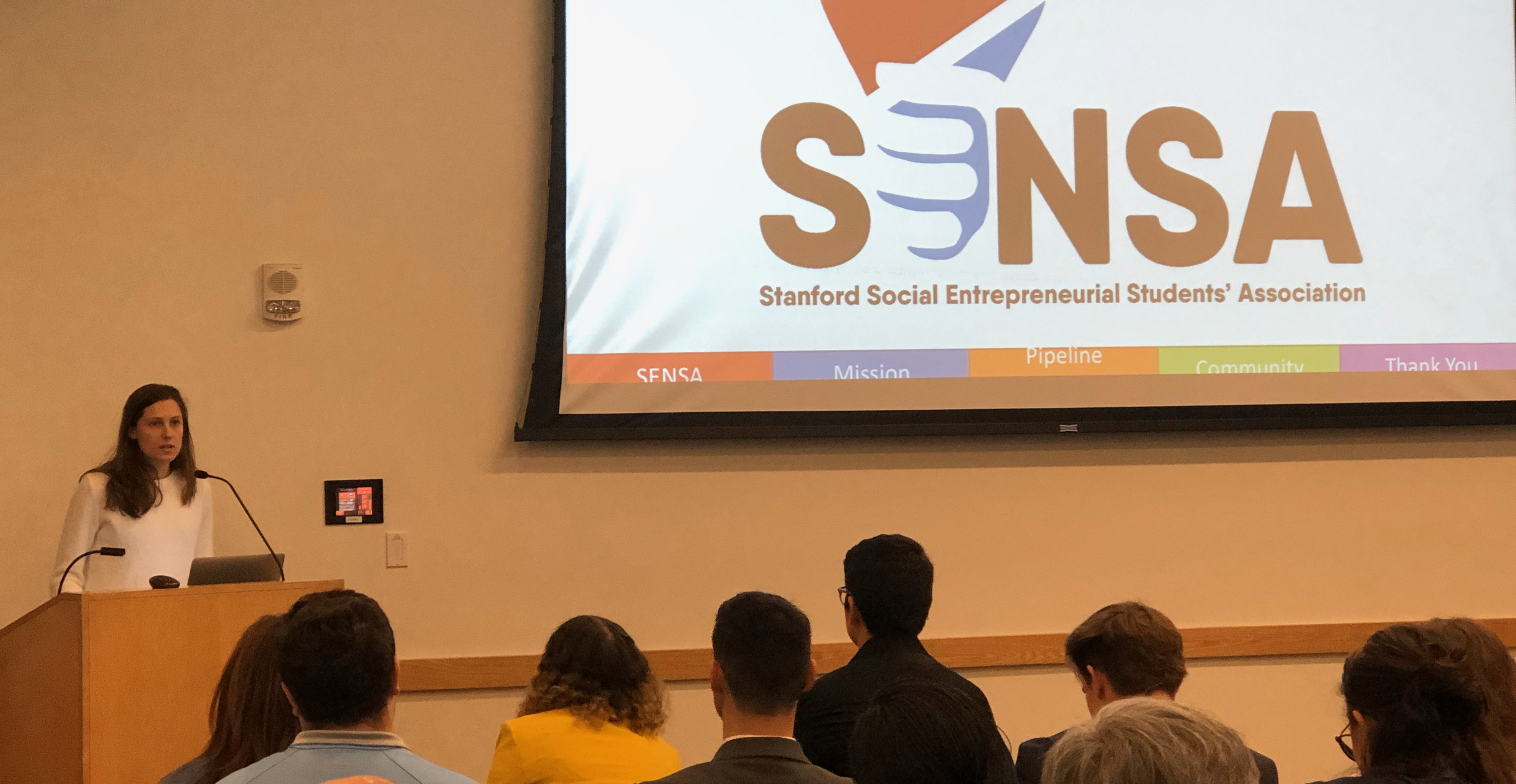
Learning through Service
By Kathryn Rydberg, ’19
When I entered the sixth grade, I switched to a new school. As the new girl, I was confronted by new classmates, new surroundings, and new classes—including a class called “Service Learning,” which involved reading books to second graders at a nearby charter school. Initially, I was confused as to why this program was called Service Learning. Since the goal of the class was to help the second-graders learn to read, I figured that a more accurate name might be “Service Teaching.” By the end of the year, however, I realized that the program had taught me as well. I came to understand how challenging it can be to teach a student something new, but more importantly, the experience of going to the school and interacting with the younger students exposed me to an environment and community that I would not have otherwise known. Though this experience happened when I was much younger, the realization that service initiatives can be beneficial to the people doing service as well as to those in need stuck with me.
Fast forward to my first year at Stanford, when I came across a club that seemed to be focused on making the world a better place while teaching students valuable professional skills at the same time. As it turned out, professional skills were just the tip of the iceberg of what my involvement with the Stanford Social Entrepreneurial Students’ Association (SENSA) would give me. Meaningful friendships, leadership skills, professional connections, experience speaking at an international conference with hundreds of attendees: these are all things I would never have had if not for SENSA.
I learned that not everyone agrees on what social entrepreneurship is, but that in general, it means applying entrepreneurial strategies in an effort to make positive, sustainable social change. Per that goal, social entrepreneurs recognize the crucial fact that if a business is economically sustainable, then it is able to make a more sustainable social impact. Similarly, organizations are more effective if smart, talented people continue to invest their efforts into them over time. Opportunities for learning and growth provide an incentive for people to continue their involvement with the organization—and that means that the organization can continue doing important work.
I saw this firsthand during a time of great turnover within SENSA. If students felt that they were not benefiting from their membership, they would quickly cease coming to meetings or replying to messages. Beyond the satisfaction of helping others, every organization has learning opportunities to offer its members: communication skills, teamwork, or leadership of an event or program. Though I was learning a great deal through my involvement with SENSA, I realized that others might lack access to these opportunities for growth. As a result, I worked to restructure SENSA to ensure that every member was able to take ownership of their service learning.
I believe that this lesson could also benefit social enterprises. Of course, the goal of many social enterprises is to put themselves out of business by solving the problem that they exist to address, but many social problems are so complicated that they will likely not be solved within our lifetimes. Therefore, the issue of talent should be viewed in the same terms as financial sustainability. Social enterprises should aim to keep employees and others who interact with their organizations engaged by offering benefits beyond the satisfaction of helping others. When the financial model and the “people model” are both sustainable, then an organization can focus fully on solving the complex issues that afflict our society.

Kathryn Morgan Rydberg has a BA in American Studies and a minor in political science. Throughout her undergraduate career, Kathryn was actively involved in the Stanford Social Entrepreneurial Students Association (SENSA) and became president and the Cardinal Commitment mentor of the organization. As a senior, she was a member of the Public Service Honors Society and the Pi Sigma Alpha Political Science Honors Society. She also served as marshal for Kappa Kappa Gamma and participated in the Stanford Marketing Group.
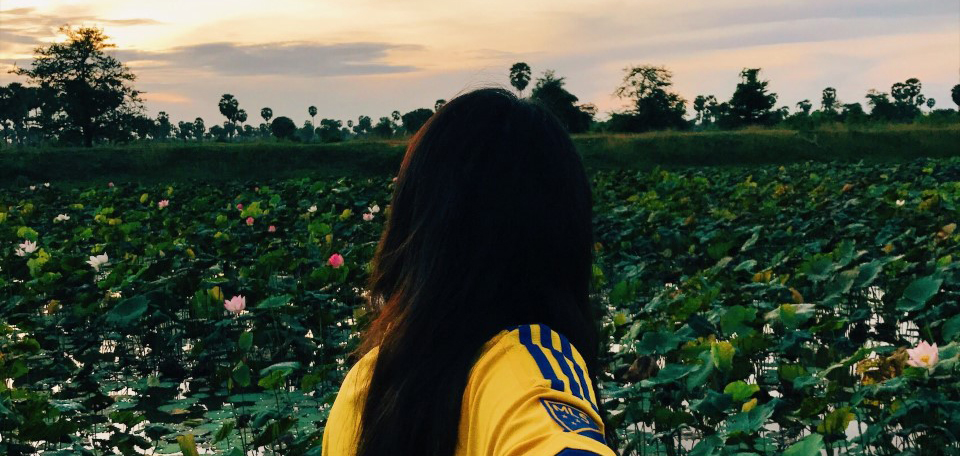
Learning Cultural Humility in Rural Cambodia
By Amy Kouch, BS ’19, MS ’20
“I would love to live here,” I said in awe, staring at the glorious sight before me.
I was working and living in a rural village in Cambodia. A friend from the village and I were sitting in an endless grassy field, having just finished soccer, a slight breeze cooling off the sweat dripping down our faces. The sun was beginning to set over the lotus ponds, the sky erupting in warmth, kissing the pinks of the petals and contrasting the deep greens of the leaves. There was something so peaceful about resting here with room to think and to spend evenings talking to someone who grew up on the opposite side of the world. I was away from the busyness, experiencing something so simple and so beautiful.
My friend turned toward me with a curious expression on his face.
“If you lived here, you would be spending hours working in the fields, not watching the sun set.”
I was taken aback by this truth. Suddenly, I was aware of how easy it can for outsiders in this community to romanticize a life of simplicity, to be drawn to place like rural Cambodia with good intentions to make an impact.
In the summer of 2017, I interned with Sarus, a nonprofit organization that focuses on peace-building for students from countries with a history of conflict.
There were every day hardships and issues that persisted for those who lived there, such as the absence of resources for education, the lack of running water, of reliable electricity—aspects that I took for granted living in a developed and industrialized economy. I also realized that these were the problems I wanted to help solve.
But I was an American visitor, an outsider in this community. In one month, I would return home. I took this moment to assess what more I could do.
What did this community need? How can I go beyond my internship and create real change and address issues that the community cares for? What does it mean to practice ethical and effective service throughout a lifetime?

Amy Kouch is a coterminal master’s student in Civil and Environmental Engineering with a bachelor’s in human biology. In summer 2017, she interned with Sarus through the Community Arts Fellowship. She was a member of the Public Service Honor Society, a year-long cohort of that provides seniors the opportunity to reflect on their public service and develop their civic leadership identities. She also interned at the Office of Sustainability and was a member of the Stanford Khmer Association and Sigma Psi Zeta sorority. She is from Rohnert Park, CA.
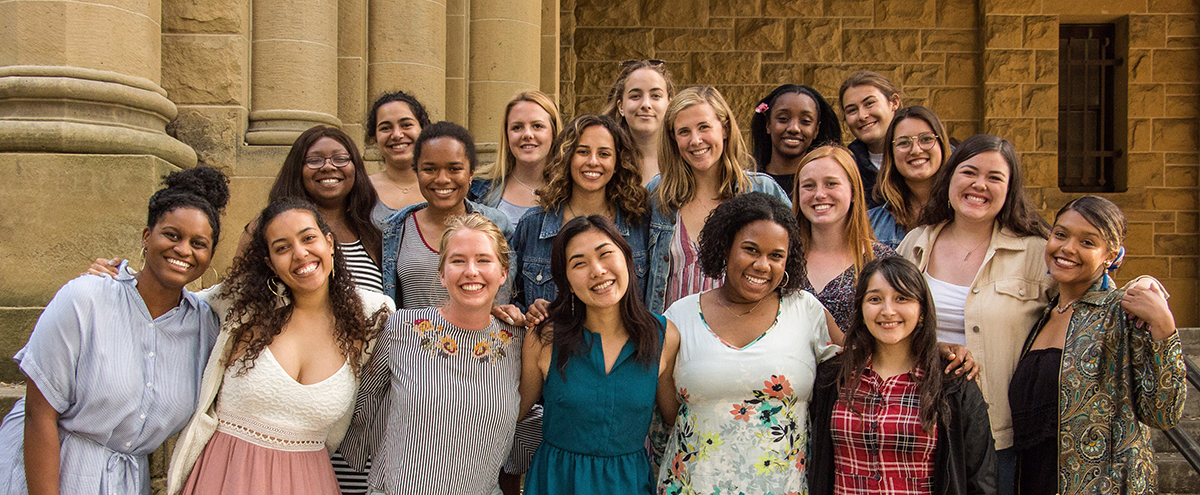
Reflecting on Four Years of Cardinal Service
By Callan Showers, ’19
The Cardinal Service initiative began my freshman year, in the fall of 2015. I am so thankful I made a lasting service commitment right away, by joining a Cardinal Commitment organization called Women and Youth Supporting Each Other (WYSE).
The Stanford women in WYSE facilitate weekly mentorship sessions for middle school girls in East Palo Alto and discuss topics like puberty, women’s empowerment, race and discrimination, and sexual health.
I was persuaded to apply because it seemed like a way for me to expand my sense of community and purpose at and around Stanford. This couldn’t have been truer. Engaging with the East Palo Alto community and its middle schoolers through WYSE has taught me innumerable lessons about cultural humility, community action, education justice, and leadership.
I also had the chance to engage with the broader Bay Area through the Cardinal Course, From Gold Rush to Google Bus: History of San Francisco. We worked with a community partner to identify little-known stories about the city’s history and write articles for an online historical database. I got to nurture intellectual interests through experiences such as digging through archives in the San Francisco Public Library, while also contributing to a community-based project with lasting impact. It also helped me realize that you don’t have to be from a place to help shape its history.
While these experiences connected me to parts of the local area, Cardinal Service programs also helped me serve in the place I have always called home: Minnesota.
The summer after my sophomore year, I received the Advancing Gender Equity Fellowship from the Haas Center and Women’s Community Center to work as a legal intern at Gender Justice, a public interest law firm in St. Paul. Gender Justice represents clients who have experienced gender discrimination or sexual harassment, and I got an inside look into legal proceedings such as depositions, while also getting the chance to draft policy advocacy memos and see the inner workings of a nonprofit.
This Cardinal Quarter inspired me to pursue public interest law because of how well it fit my skills and my desire to make change. I am pursuing a two-year position as a paralegal at a civil rights law firm in Washington, D.C. I truly believe without the values of community-engaged learning experiences and the way I saw my personal and professional values and skills align at Gender Justice, I would be less prepared to enter into this work and my life beyond.
 Callan Showers, ’19, was in the first class at Stanford to experience four years of Cardinal Service. She co-led the student organization Women and Youth Supporting Each Other (WYSE). Callan also completed a Cardinal Quarter with Gender Justice, a nonprofit law firm, and a Cardinal Quarter from the Bill Lane Center for the American West serving with the French cinema house Galatée Films.
Callan Showers, ’19, was in the first class at Stanford to experience four years of Cardinal Service. She co-led the student organization Women and Youth Supporting Each Other (WYSE). Callan also completed a Cardinal Quarter with Gender Justice, a nonprofit law firm, and a Cardinal Quarter from the Bill Lane Center for the American West serving with the French cinema house Galatée Films.
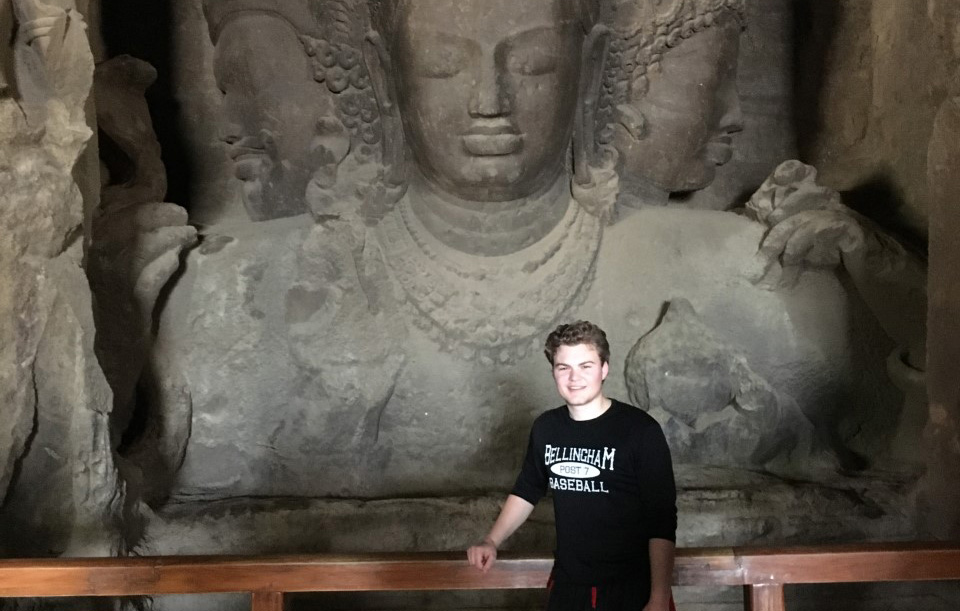
How do we know we’re helping?
By Tim Lann, ’19
I entered Stanford with a passion for serving those in need, and I knew I wanted to pursue a career in international service. However, it wasn’t until my second year that my plans came into focus.
I had led a service organization while I was in high school, but I didn’t have a framework for analyzing the true, sustainable impact of the work I was doing. During my sophomore year at Stanford, I took Pascaline Dupas’s developmental economics class. I learned about impact evaluations and randomized controlled trials, and how the field studies the impact that public service projects are making. This inspired me to take other classes within the developmental economics field and start my own research project on how female leadership impacts education inequality in India. The research is a continuation of Esther Duflo’s work in the early 2000s and demonstrates that when a woman is in a political leadership position in India, the investment in education increases. I published my first research paper on this topic in 2018 and plan to continue this research in the coming years.
Through learning about impact evaluations, I realized how many service efforts go un-studied and un-analyzed. This is a major problem across many fields of service; we can’t know if we’re actually helping unless we have a framework of analysis. This realization has motivated my current desire to pursue international development consulting, to act as a liaison between big development funders such as The World Bank and USAID and the people working and serving on the ground. In the next few years, I hope to work to increase the rigor and analysis that goes into measuring the success or failure of service projects.
Tim grew up in Seattle. He has a BA in Developmental Economics and is working on an MA in Public Policy with an emphasis on international development. Before coming to Stanford, Tim ran a nonprofit in Central America focused on connecting kids in rural areas of Central America with educational opportunities, as well as getting young people involved in Habitat for Humanity builds. At Stanford, he has been involved in Asha for Education, Stanford in Government, Stanford Economics Association, and Stanford Undergraduate Research Association.
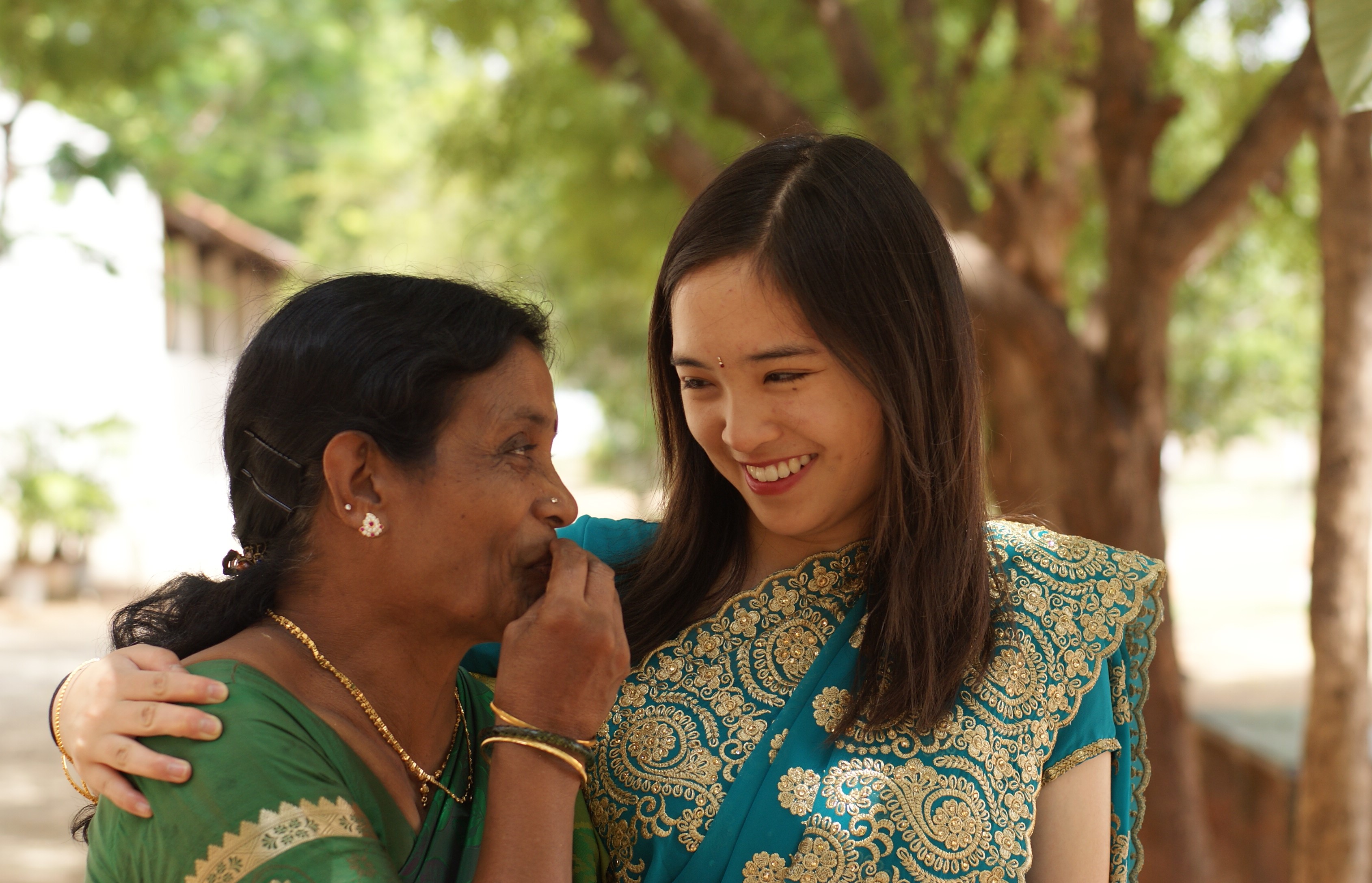
Updating My Views: On Science Education and Life in Rural India
By Catherine Wang, ’21
Last summer I had the extraordinary opportunity to spend eight weeks teaching at the AGN School in Tamil Nadu, India. As a Cardinal Quarter fellow with Project Dosti, I taught science for middle and high school students and helped implement an interdisciplinary curriculum that emphasized the excitement of real-world problem-solving. My experience was a reminder of how much I love biology, as I had found it difficult to maintain the same enthusiasm for the subject during the cyclical grind of the school year. But in Tamil Nadu, I ended each day with my body covered in chalk dust, my voice hoarse, and my smile too big for my face.
I’ve always been passionate about STEM education, so I think a lot about how science can be taught better and made more accessible, especially biology. When I arrived, I saw that the students’ textbooks were outdated and did not emphasize real-world applications of the basic sciences. In response, I designed new lessons that introduced cutting-edge biology research, some of which originated at Stanford. One of my favorite lessons was about how CRISPR gene-editing technology could potentially be used to cure many of the diseases that the students already knew. Because they had only memorized a list of genetic disorders, they had never seen the impact of such diseases and the ways that basic biological mechanisms could be harnessed to treat them. I taught different versions of this material to students from 8th to 11th grade, scaling the level of detail accordingly. No matter what age the students were, their minds were blown.
When I reflect on my experience in Tamil Nadu, I realize that just because communication is efficient and hot water comes out of the tap doesn’t mean American culture is superior. As I saw it, the culture in the rural village where I lived was a lot less isolating and more communal than what I was used to in the United States. This was apparent in the language—kids called each other “brother” and “sister,” and teachers called each other “sister” and “mother.” There were also fewer formalities in everyday speech, so people would ask me deeply personal questions that allowed them to get to know me better, more immediately.
I spent two nights staying in an art teacher’s rooftop home. She was widowed and by all definitions extremely poor, but her life was full of color and simple joy. Whereas I had accepted a relatively nomadic life in the United States, families in the village had lived there for many generations. My art teacher knew her neighbors well and children from the village poked their heads into her home every few hours.
My time in India made me reevaluate my identity as an American and as a Stanford student. I began to measure myself in more mundane but important ways—as a friend, creator, and teacher, rather than a three-point-something GPA student destined to jump through progressively more demanding academic hoops. Though I went there to provide a more modern education, I learned something that neither the latest scientific nor technological advancements could ever teach: a view of life that values community, hospitality, and human connection. I hope to take this with me on all my future adventures.
Catherine Wang is a pre-med student studying biology and art practice. Through Cardinal Quarter, Catherine joined five other Stanford students to serve in India with Project Dosti. She is from Lexington, Massachusetts.
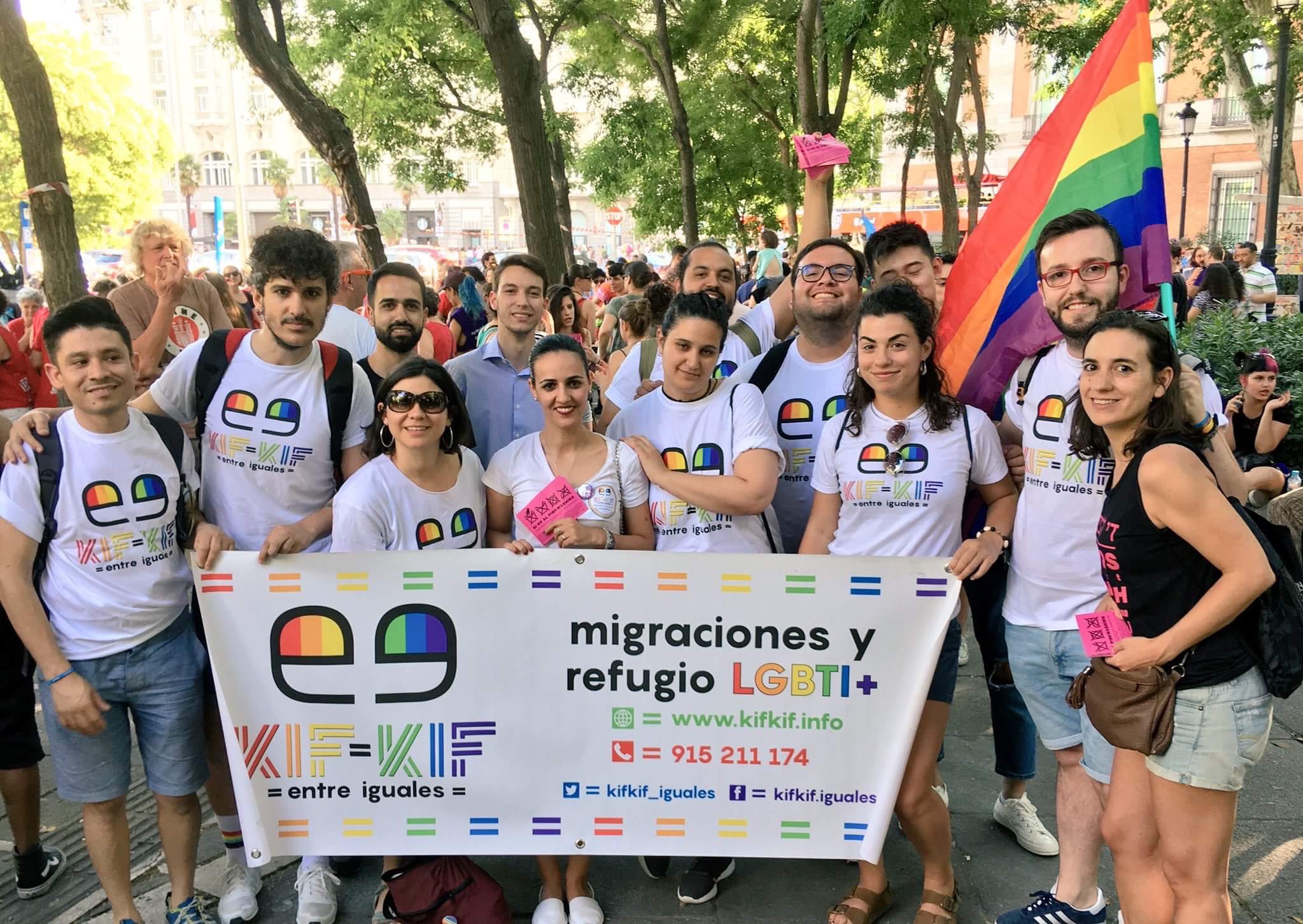
Queer Migrant Experiences: Exploring Self and an International Community
By Alan Arroyo-Chavez, ’19
The warm summer air kissed my face as I sat on a tree-shaded hill watching the sun set between la Catedral de la Almudena and el Palacio Real. Who would have thought that a boy from Tracy, California would end up basking in the orange madrileño sun?
Then again, this was my second time in the city. When I first came to Madrid, Spain in 2017 through the Bing Overseas Studies Program, the city charmed me with its architecture, liveliness, and people. I didn’t think I would return, but then I was offered the Halper International Summer Fellowship to work with Kifkif, a nonprofit organization whose mission is to provide aid to queer immigrants in Madrid. People who seek help from Kifkif come from Europe, Latin America, and Northern Africa; they speak English, Spanish, French, Italian, Romani, and Arabic.
Immediately, I was put to work transcribing interviews that my supervisor, Florencia Rivaud, had conducted to shed light on queer immigrants’ experiences coming to Spain. In these interviews, I heard about queer people being extorted because of their identities and Latinx trans women being ostracized. I was shocked by the hardships that the people interviewed went through. However, these same people made a home for themselves in a new country, came to terms with their identities, and maintained positive attitudes. Many of these immigrants and their children return to work for Kifkif to help others settle in Madrid.
Listening to their stories forced me to break through the veil of comfort that living in the United States created. As a queer Mexican man, I see the community of queer refugees in Madrid as part of my own broader Latinx and queer community. However, we differ in a key way. In the United States, despite its own shortcomings, I can be open with my friends and my loved ones, and this safety is a privilege that I took for granted.
Laws and cultures around LGBT issues in places like Spain shift over time. Spain decriminalized homosexuality in 1979 soon after the fall of the Franco regime, legalized same-sex marriage in 2005, and instituted penalties for discrimination based on sexual orientation. (In comparison, there are still jurisdictions in the United States that protect an employer’s right to dismiss an employee based on sexual orientation). Because Spain has risen as one of the countries most accepting of LGBT people, Latin Americans immigrate to Spain. This migration is complicated and ironic given that these immigrants seek refuge from violent dynamics that Spain established in the first place.
I think a lot about how after 1492 Spain imposed Catholicism in Latin America, establishing rigid gender roles and solidifying hetero-patriarchal dynamics among indigenous peoples and their mixed descendants. Those dynamics continue to affect my community, including myself.
Though it continues to be difficult to unpack the relationship that my Latinx communities will always have with Spain, this Cardinal Quarter experience has been a gateway to learning more about the human rights issues that queer people face internationally. I hope to continue learning about the experiences of queer immigrants from countries outside the United States so that I can better connect with communities I consider my own.

Alan Arroyo-Chavez is majoring in Comparative Studies in Race and Ethnicity. He is a member of the Public Service Honor Society, a year-long cohort that provides seniors the opportunity to reflect on their public service and develop their civic leadership identities. In 2018, he completed a Cardinal Quarter in Madrid, Spain with Kifkif, an aid organization for queer immigrants.
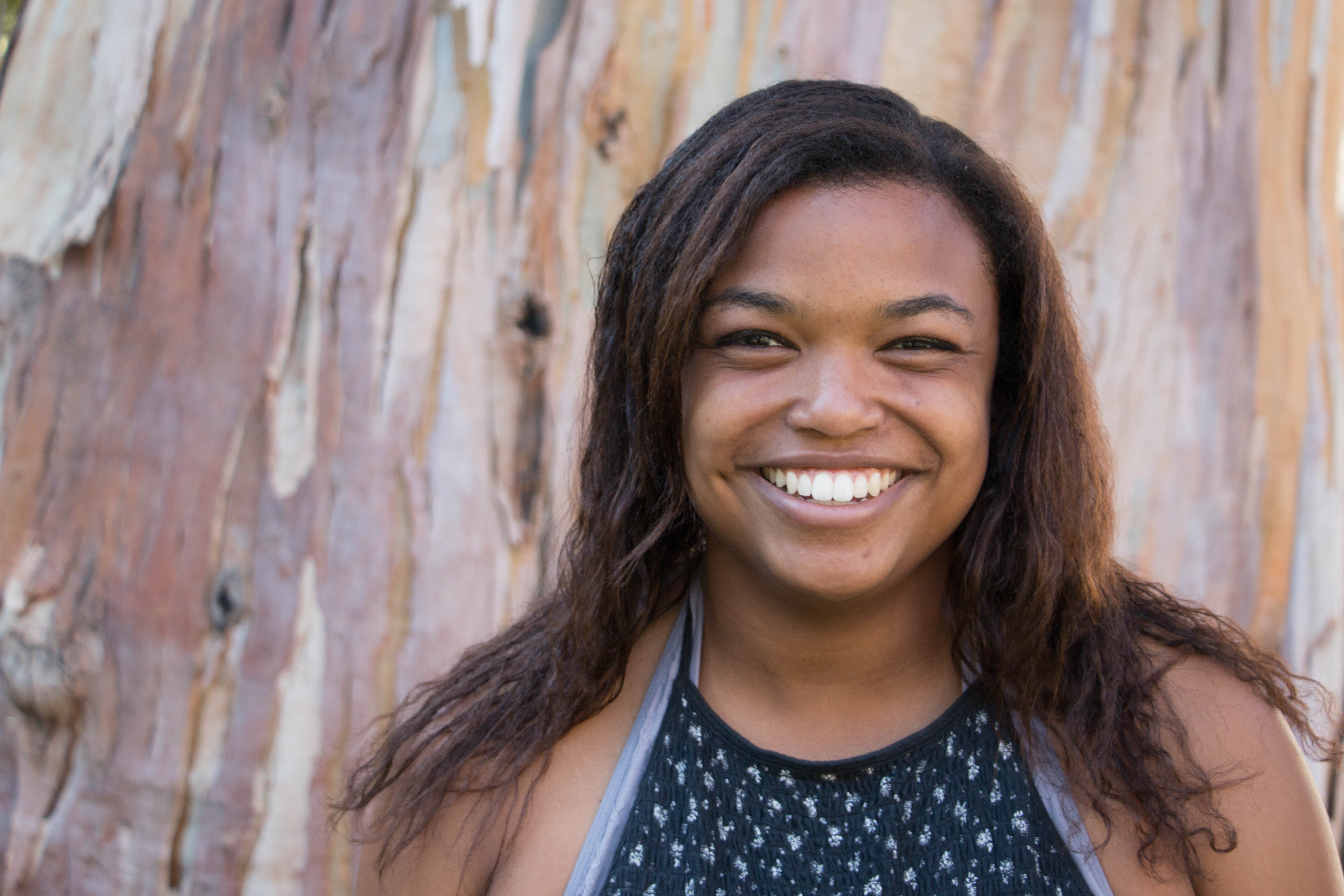
Who Tells Their Stories: Questions of Ethics and Agency at the Southern Border
By Jenn Ampey, ’19
The room was tiny and filled with more people than the fire code allowed. Giant cameras stood on tripods at various heights, but all of them were tall enough to block my view.
I was attending a press conference for parents looking for children who had been taken from them by Immigration and Customs Enforcement (ICE). It was only my second day of work with Hope Border Institute, a human rights advocacy organization on the southern border, but already the whirlwind that was summer 2018 had swept me up; every day brought news of changes to U.S. immigration policy and the deepening insecurity for asylum-seekers under the Trump administration. In the crowd stood reporters from the Washington Post, CNN, and Telemundo. Microphones from the newspapers and networks sat atop their cameras, pointing at ten parents sitting in a line across the front of the room. They took turns speaking.
This press conference was my first (but not last) visit to Annunciation House, a shelter for recently arrived immigrants that was quickly becoming the center of media-to-parent interaction under the outspoken leadership of the director, Ruben Garcia. Struggling to balance engagement with the media and his desire to protect the newly arrived immigrants under his care, he stood nervously at the front of the room. As reporters jostled in front of me, I realized that many of them didn’t speak Spanish. On the other hand, the parents waiting to speak to us did not speak English.
Accepting the fact that I would never be able to see, I settled into my spot against a wall to listen, occasionally glancing up at the camera monitors overhead to get a picture of who exactly was speaking. My supervisor, Edith, stood next to me as farm labor leader Dolores Huerta arrived to take the seat that we were saving for her in the back. She lasted about five minutes of not being able to see anything before she stood up and made her way quietly through the crowd to the front, where she could look directly into the faces of the parents.
A father spoke emotionally about missing his son, eventually breaking down and sobbing at the table, while Ruben’s hand rested on his shoulder. In that moment, I noticed something that would preoccupy me for the rest of the summer. As the man cried harder and harder, the sounds of hundreds of camera shutters filled the air. It was a hot day, but I felt a chill crawl down my spine. Bile rose in my throat, and I turned my head away. For the rest of the press conference, I stared at the ground and tried to hold back angry tears and take in everything I could at the same time.
When the press conference finished, I helped my supervisor field translation requests from reporters who only spoke English but still wanted individual interviews with the parents. Eventually, we left and walked back to the car. I slid into the passenger’s seat with a migraine throbbing from the emotions of the day. A tear slid down my cheek and mixed with the sweat from Texas’s harsh summer heat. Day 2 of 45.
Jenn Ampey, ’19, is an international relations major with a minor in human rights, from Rockville, Maryland. She is the Cardinal Service Peer Advisor team lead and member of the WSD Handa Center for Human Rights and International Justice Student Advisory Board. After graduation and a gap year, she hopes to earn a joint law degree-journalism masters’ degree and help find better ways to tell the stories of survivors of human rights abuses, largely as a result of her Cardinal Quarter experience on the border.
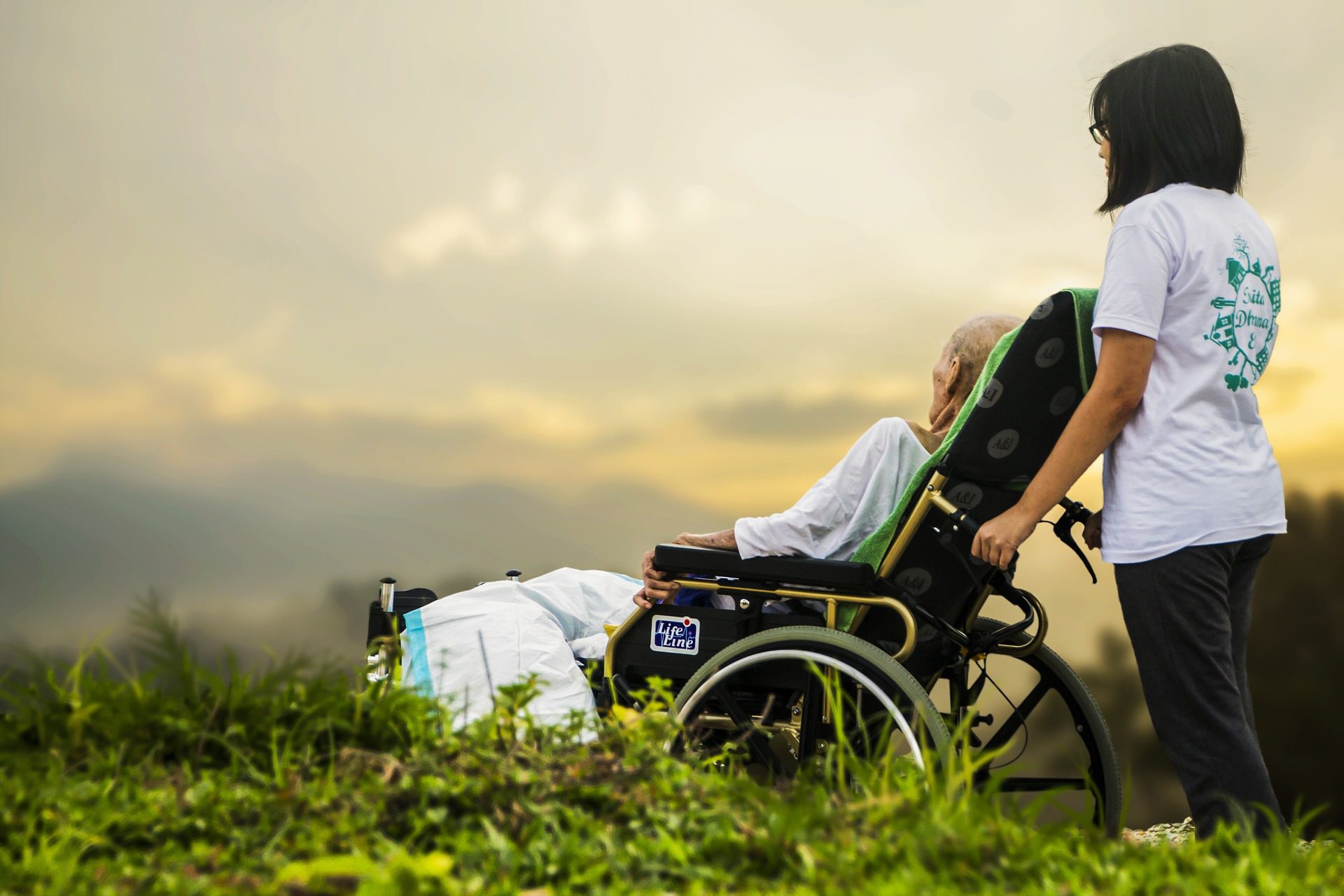
What End-of-Life Care Taught Me About Medicine Beyond Medication
By Jonathan X. Wang, ’19, MS ’19
I remember how Frank loved jazz. How he smiled whenever I mentioned his wife or his three daughters. The stain on the corner of his checkered shirt, the slight bulge in his belly, the tan khakis he always wore.

But I also remember how frail his aging hands were. How Alzheimer’s took his ability to remember his favorite song. How his face would fall at the end of our weekly visits. I remember his last whisper to me that echoes in my head months after his death.
Frank, like my other hospice patients, taught me that medicine isn’t only about life expectancies, surgeries, or prescriptions. It’s about Nate, a teen with HIV whose main concern is whether he’ll ever make friends at school; or Jacob, who wants to spend his remaining days with his three daughters, not at a clinic taking a barrage of medical tests.
I first started volunteering in hospice the summer before coming to Stanford, with some encouragement from my older sister and a book I read, The Empathy Exams by Leslie Jamison. The patients I met showed me the value of care beyond data and diagnosis, beyond literature and calculations. I have seen a patient’s eyes light up over a conversation about their poetry collection, their wife, their three kids. I’ve also sat with patients as they came to a peaceful end or violently struggled to keep their autonomy. These experiences have taught me that empathy can be like a clinical skill—we strengthen it when we go beyond routine pleasantries, and we treat with it by listening with intent and bringing difficulties to light.
Frank’s diagnosis of Alzheimer’s meant that during our time together, he lost memories of who he was. It meant he was going to forget our visits. He was going to forget my name. I know many of these stories are sad, and some did not have happy endings. But these stories inform my resolve to make sure that in the future we find ways to change the ending for people like Frank.
Inspired by my experiences in hospice, I reached out to Dr. VJ Periyakoil, the director of Palliative Care Training at Stanford Hospital. Under her guidance, Anthony Milki, ’18; Yong-hun Kim, ’19; and I established an organization in 2016 that works closely with the elderly community to engage students in compassionate care and spread awareness of the challenges facing our growing elderly population: Stanford Undergraduate Hospice and Palliative Care (SUHPaC).
Through SUHPaC, I have seen how working with patients at the end of their lives fosters love and respect for others. I have witnessed the transformation of our members into caregivers as they discover that medicine is more than just a pill. Founding the organization is the thing I am proudest to have done at Stanford. Someday, I hope to shake the hands of a hospice patient, not as a young man unsure of his future, but as a confident, learned, and caring individual in a white coat, extending a hand to help.
Jon Wang, ’19, is a computational biology major and coterminal master’s student in biomedical informatics. He is a member of the Public Service Honor Society, a year-long cohort of seniors that provides students the opportunity to reflect on their public service and develop their civic leadership identities. At Stanford, Jon has been involved in Stanford Emergency Medical Services, Golden Gate Science Olympiad, AI and Cancer Biology Research, and Stanford Health Innovation. He is from Roseville, Minnesota.
